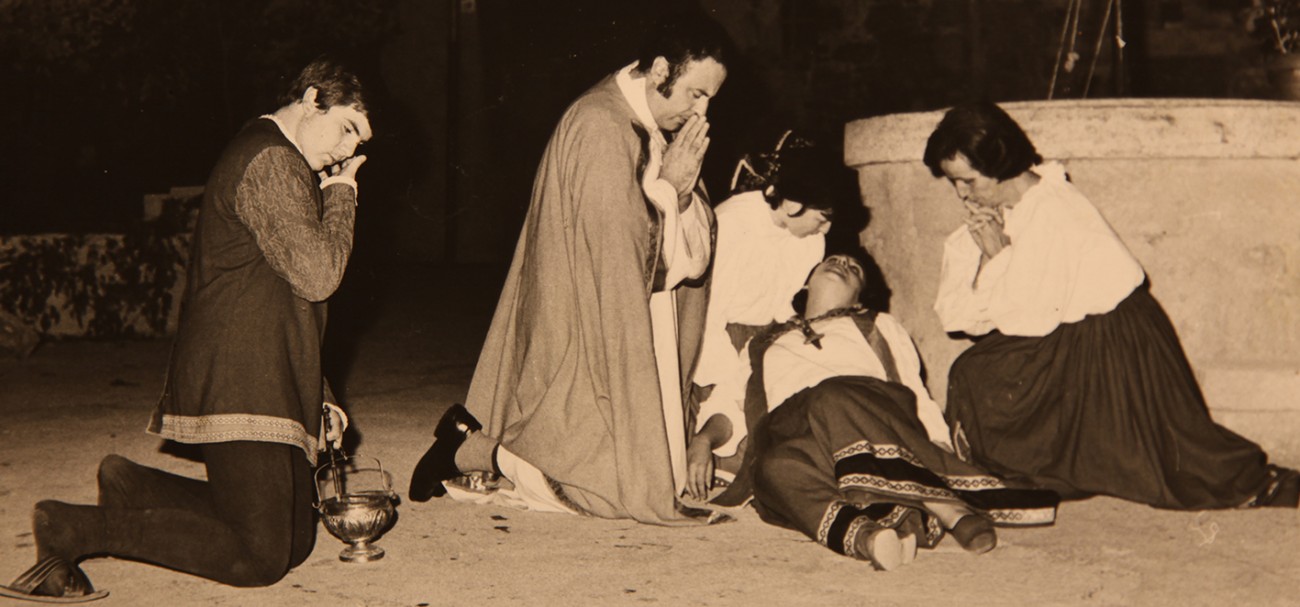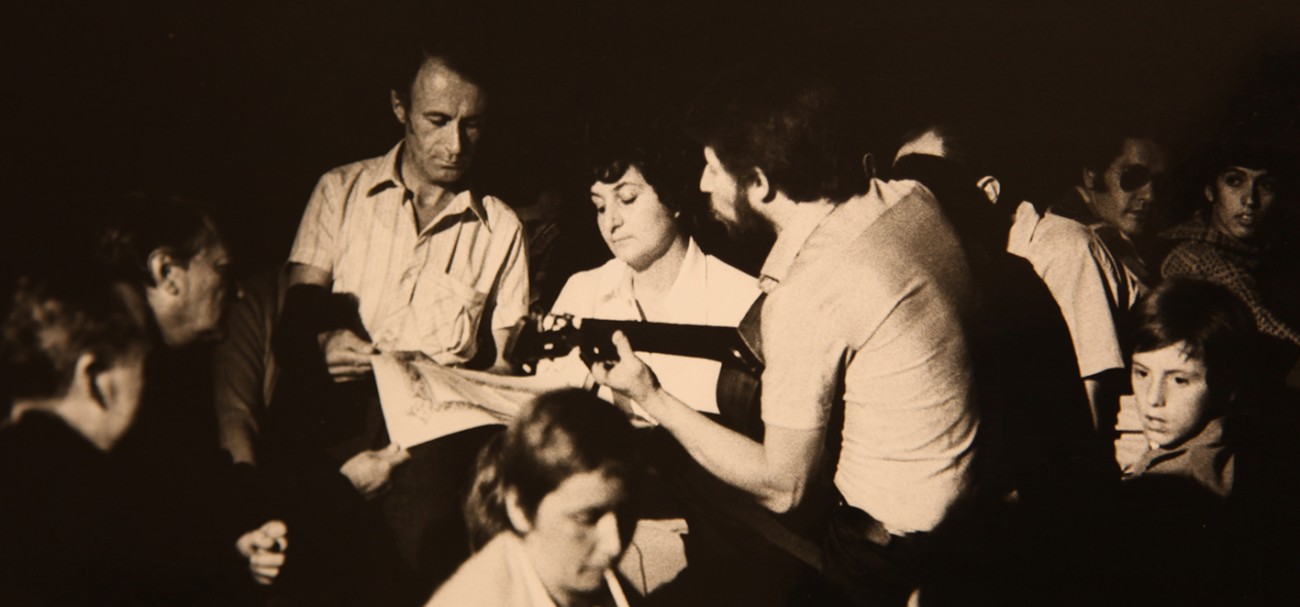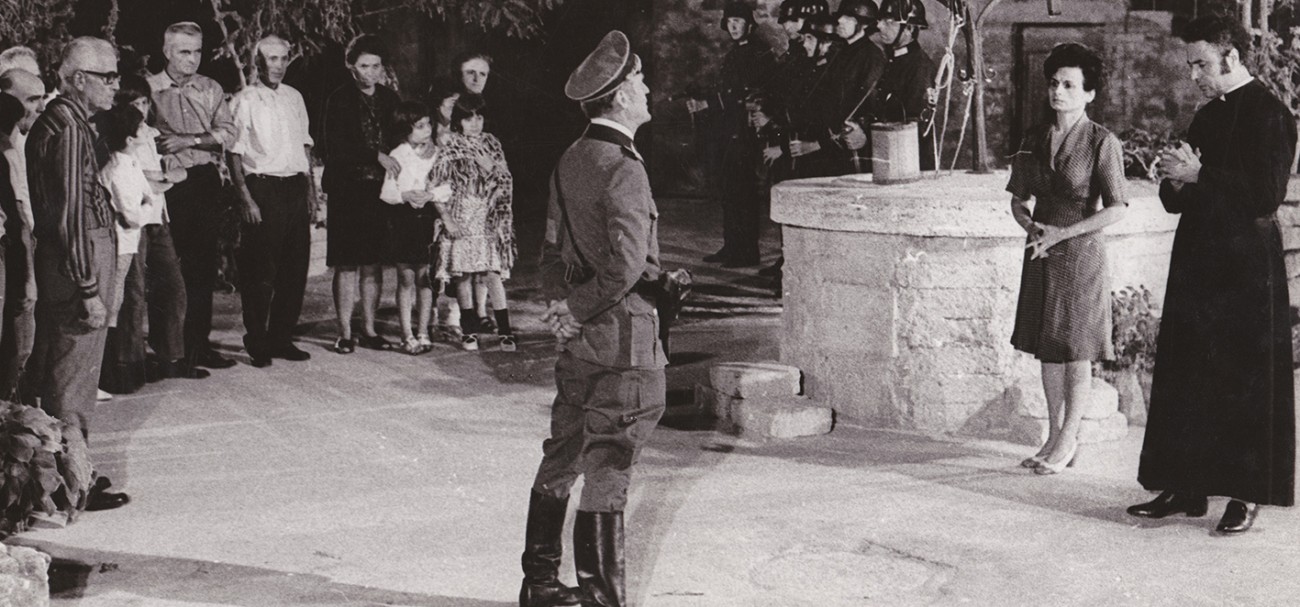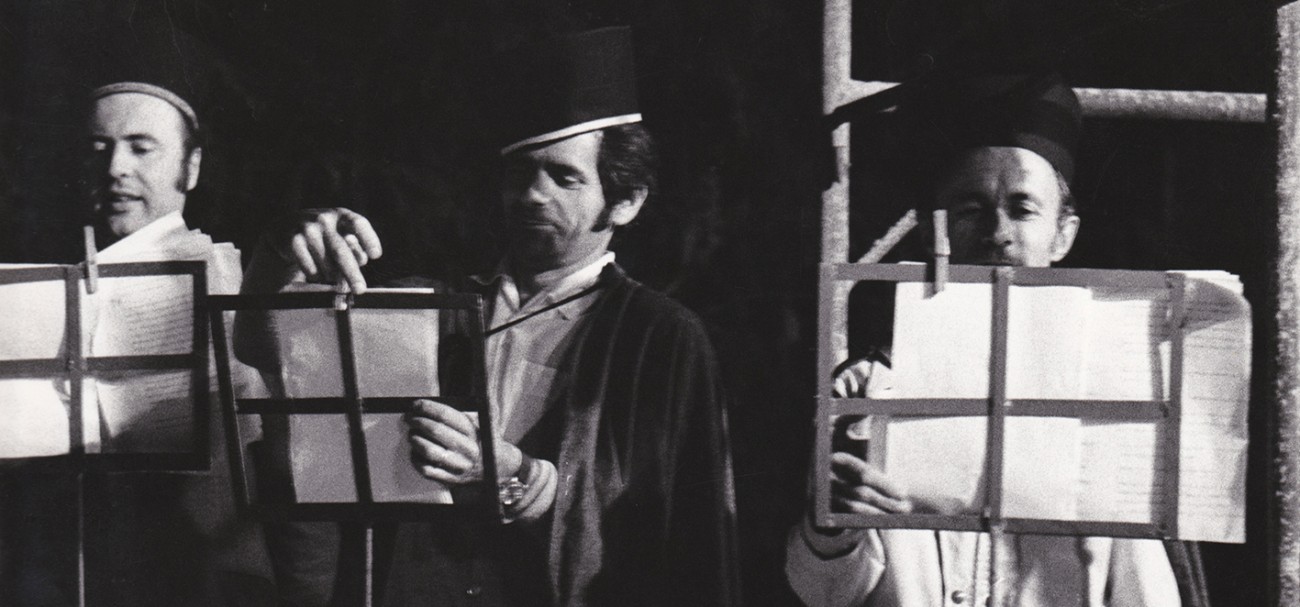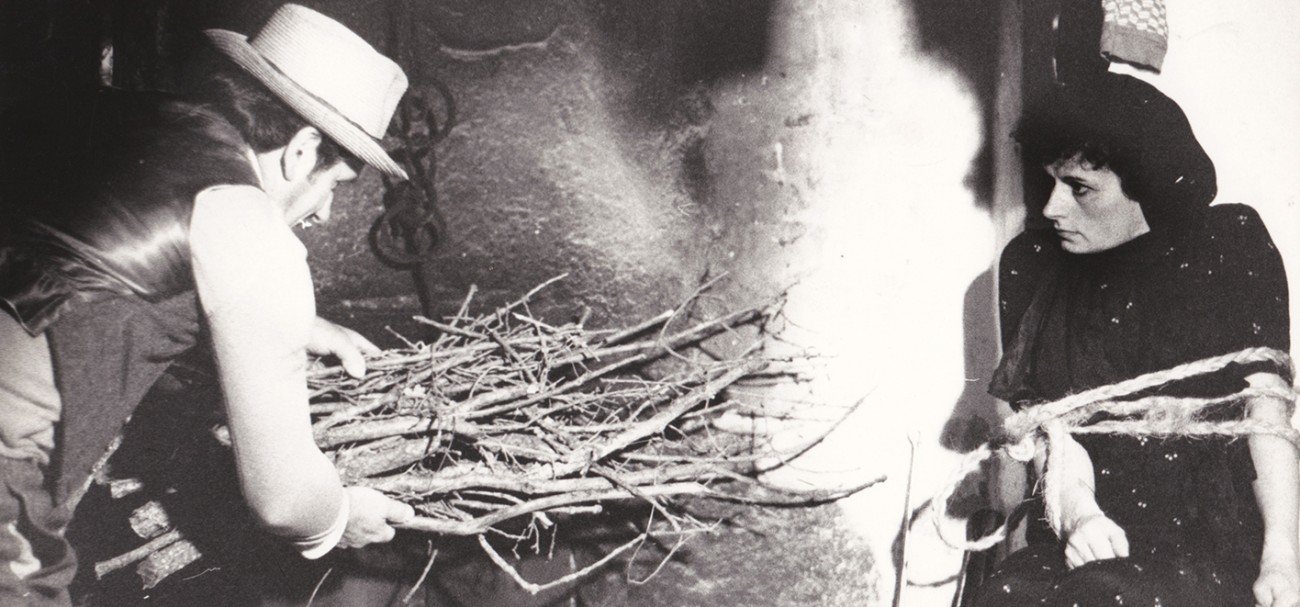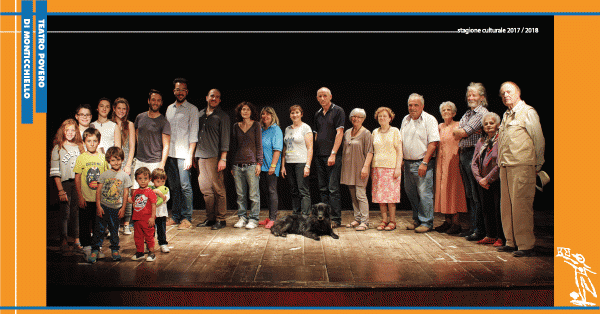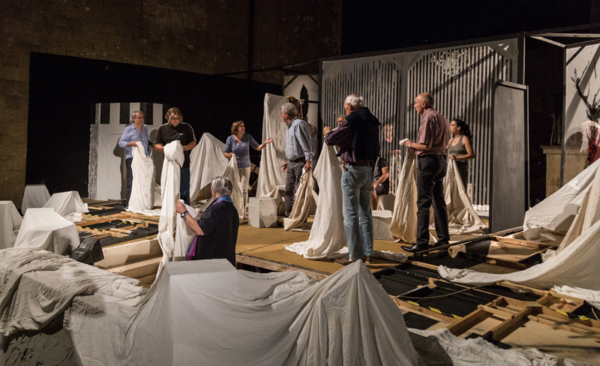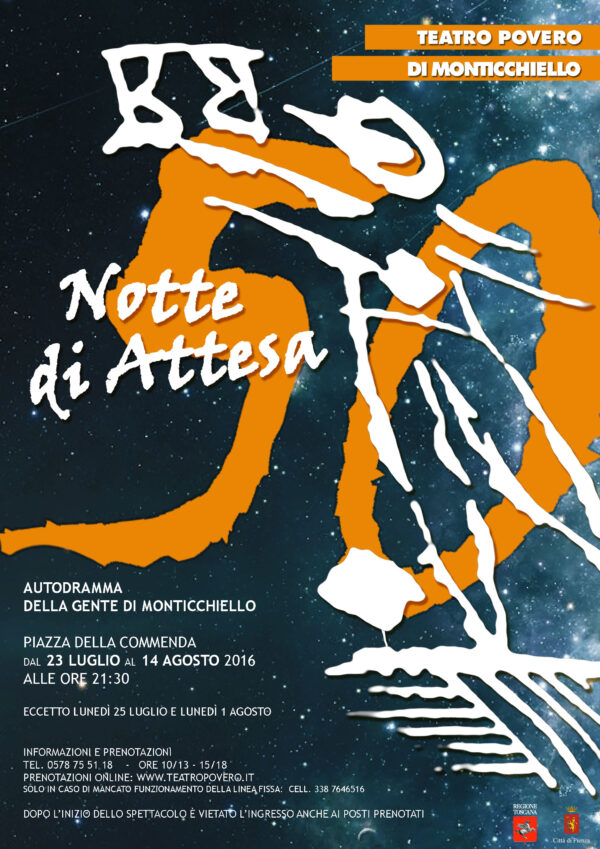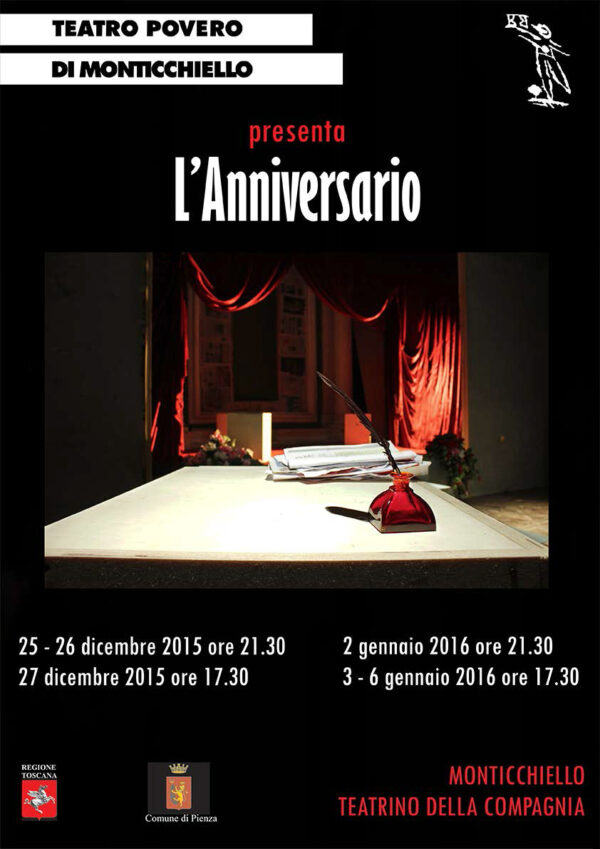On 15 November 1972, Pope Paul VI issued a pronouncement about the devil: this prompted the choice of dramatic subject for that year, and directed some research towards Monticchiello’s diabolic legends.
The long-standing figure of the devil has left his traces, both in local popular consciousness and in the rocks which surround the so-called “Caves of the Blessed”. The Blessed Giovanni Benincasa, a historical figure, is supposed to have been tempted by the Devil in 1401 and defeated him in a dramatic struggle. From a re-enactment of this encounter, this year’s autodramma moved on to represent other accounts of the Devil’s intervention in the history of Monticchiello, concluding with the massacre which nearly took place on 6 April 1944.
From the Devil we moved on to witches, supposed to be his followers. The second act of the play in fact enacted various aspects of local tradition culminating in an episode which took place not far away, incredibly, in 1949. In the third act the Monticchiellese actors debated the issue from various points of view, which can be summarized under three headings. Firstly the official Church position, which was that the Devil was a person who really exists; secondly the rationalist view according to which various phenomena are reducible to logical and natural explanations, involving superstition and auto-suggestion; and thirdly the opinion that the Devil is an imaginary personification of real evil. An evil which has always been present in mankind, and which today shows itself in terrible threats to the world such as the atom bomb and global pollution.

